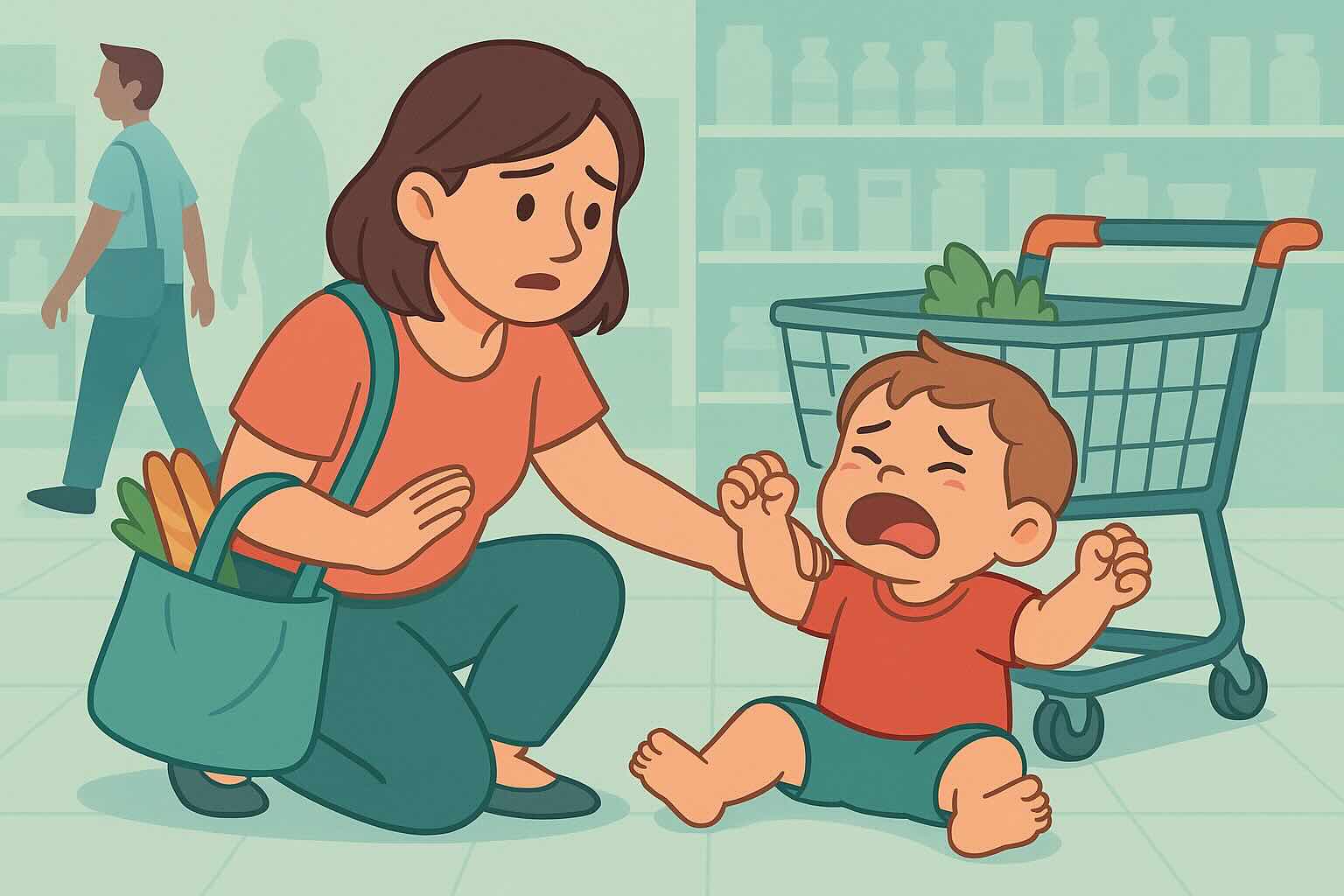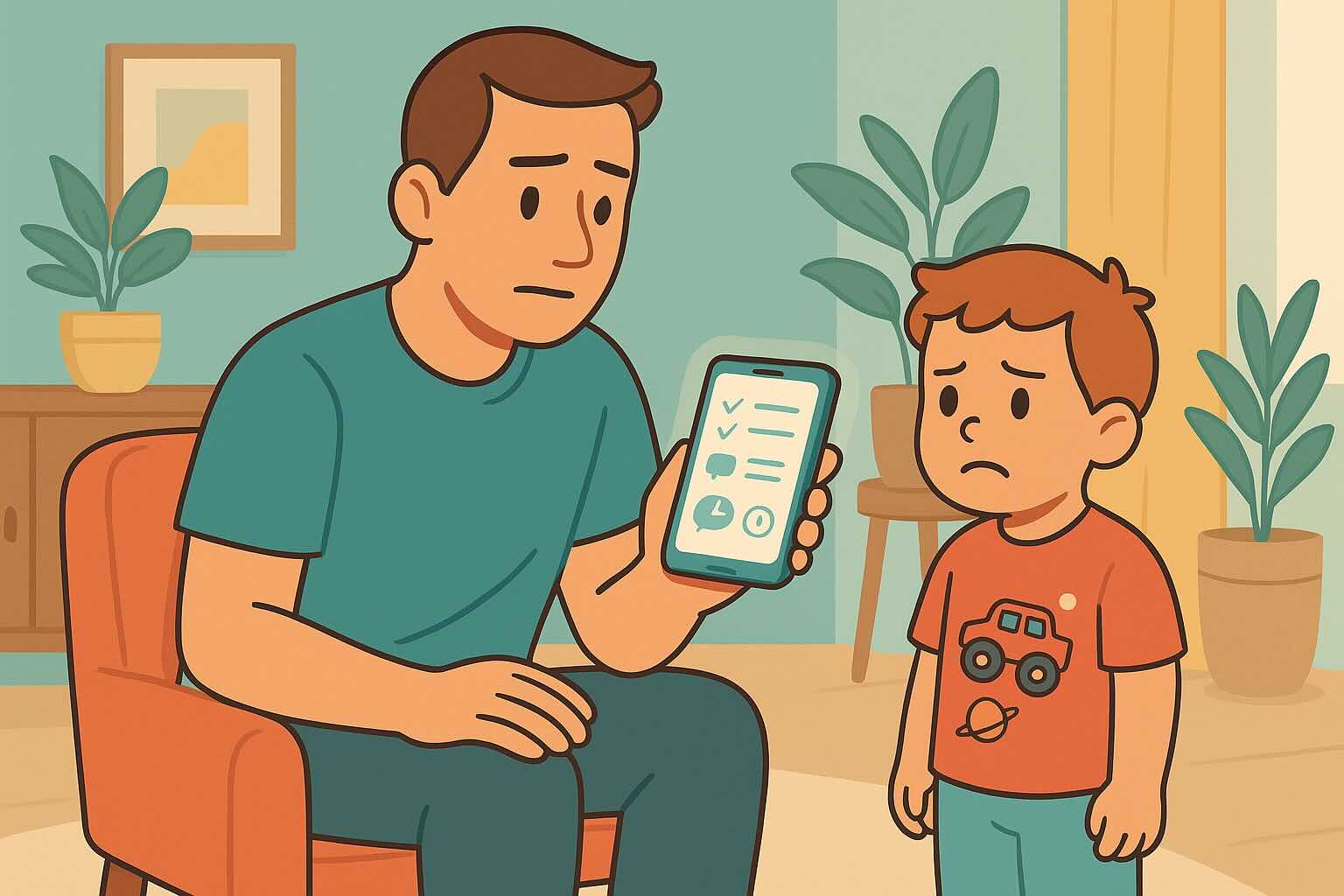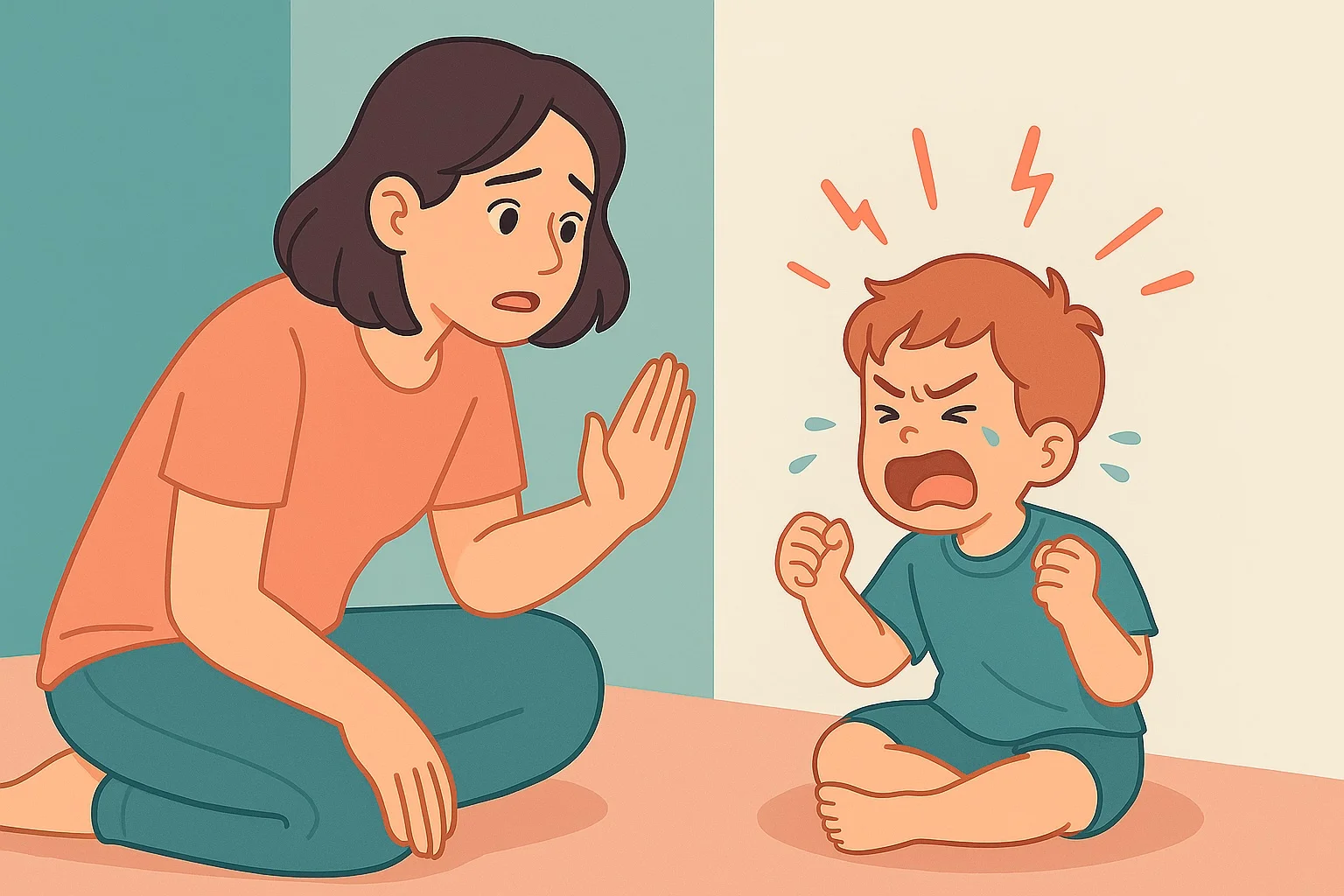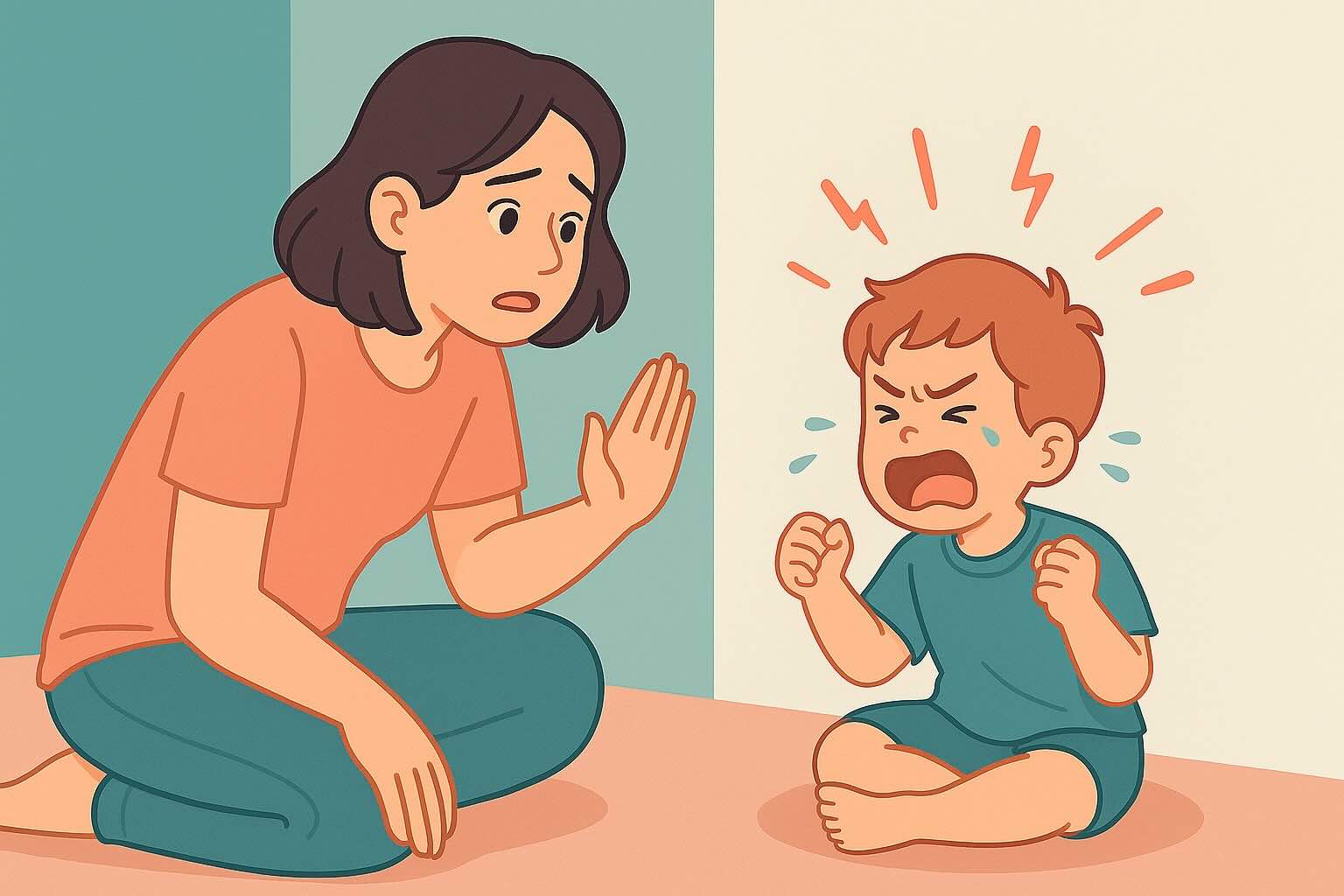Public Tantrums: 9 Survival Scripts That Keep You Calm and Confident


That sinking feeling when your toddler starts melting down in the middle of Target... we've all been there. Your face flushes, eyes start staring, and you're wondering if you'll ever be able to show your face in public again. But here's the truth: research shows that 33% of parents report high stress levels compared to 20% of non-parents, with public behavior challenges being a significant contributor to parental stress.
You're not alone, you're not failing, and most importantly—other parents get it. This comprehensive guide will give you the confidence and specific strategies to handle public tantrums like a pro, maintain your boundaries, and actually enjoy outings with your toddler again.
For the complete foundation on tantrum management, start with our main tantrum guide, then use the prevention strategies to reduce public meltdowns before they start. Understanding the developmental science behind tantrums helps you respond with confidence - see our tantrum science guide for the brain-based reasons behind public meltdowns.
What You'll Learn in This Guide
- Why Public Tantrums Happen - The science behind public meltdowns
- Pre-Outing Preparation - Set yourself up for success before you leave
- Location-Specific Strategies - Grocery stores, restaurants, parks, and more
- In-the-Moment Management - Exactly what to do when the meltdown starts (using our 5-step response method)
- Dealing with Judgment - How to handle stares and comments
- Exit Strategies - When and how to leave with dignity
- Recovery and Learning - What to do after a public tantrum
Estimated reading time: 9 minutes
Why Toddlers Have More Tantrums in Public Places
The Perfect Storm: Why Public Spaces Trigger Meltdowns
Public spaces create a unique combination of tantrum triggers:
Sensory Overload:
- Bright lights and loud noises
- Crowds and unfamiliar faces
- New smells and textures
- Visual overstimulation from products and signs
Routine Disruption:
- Different timing than home schedule
- Unfamiliar environments and expectations
- Limited space to move freely
- Disrupted nap or meal times
Parental Stress Amplification:
- Feeling judged by others
- Pressure to handle the situation "perfectly"
- Embarrassment and anxiety
- Time pressure to complete errands
Power Dynamic Shifts:
- Toddlers learn public tantrums get different responses
- Parents may be more likely to negotiate or give in
- Inconsistent boundary enforcement due to embarrassment
How Public Spaces Overwhelm Your Toddler's Senses
From your toddler's perspective, public outings are intense sensory experiences with:
- Overwhelming stimulation they can't escape
- Loss of control over their environment
- Disrupted routines that usually help them feel secure
- Your stress which they absorb and reflect back
Understanding this helps you respond with empathy rather than embarrassment.
How to Prepare for Public Outings to Prevent Tantrums
6 Proven Preparation Methods That Prevent Public Meltdowns
Environmental Preparation
Timing Considerations:
- Schedule outings after meals and naps when possible
- Avoid peak hunger or tiredness times
- Plan shorter trips during challenging developmental phases
- Build in buffer time so you're not rushed
Energy and Sensory Management:
- Let them burn energy before confined activities
- Plan active time after sedentary public time
- Consider bringing a stroller for tired moments
- Pack comfort items and sensory tools for regulation
Physiological Readiness
Set Clear Expectations:
- "We're going to the store to buy groceries. We'll stay together and use walking feet."
- "At the restaurant, we'll sit in our chairs and use quiet voices."
- "If you need help with big feelings, squeeze my hand and I'll help you."
Create Portable Routines:
- Bring familiar snacks and drinks
- Pack a special "outing toy" or activity
- Use consistent phrases and responses
- Maintain familiar comfort rituals
Emergency Toolkit
Physical Supplies:
- Snacks and water
- Comfort item (lovey, small toy)
- Wet wipes and tissues
- Quiet activities (small books, stickers)
- ⚠️ Avoid digital devices - 2024 research shows screens create harmful dependency cycles for emotional regulation
Emotional Tools:
- Pre-planned calming phrases
- Deep breathing techniques you've practiced
- Distraction techniques that work for your child
- Exit strategy planned in advance
Parental Mindset
Confidence Building:
- Remember that tantrums are normal development
- Other parents have been in your shoes
- You're teaching important life skills
- Progress isn't always linear
Location-Specific Survival Strategies
Grocery Store Tantrums: The Ultimate Test
Before You Enter:
- Shop after meals when possible
- Bring snacks and a drink
- Let your toddler know the plan
- Get a cart with a car attachment if available
During Shopping:
Engagement Strategies:
- Give them a job: "Can you help me find the red apples?"
- Let them hold non-breakable items
- Count items as you put them in the cart
- Play "I Spy" with colors or shapes
Prevention Techniques:
- Keep trips short (30-45 minutes max)
- Shop during less busy times
- Use a list and stick to it
- Bring entertainment for checkout lines
When Meltdowns Start:
- Stay calm and get down to their level
- Use a quiet, matter-of-fact voice: "You're disappointed we can't get candy. I understand."
- Offer limited choices: "Would you like to sit in the cart or walk with me?"
- Redirect if possible: "Let's find the bananas together."
- If needed, step aside to a quieter area until they calm down
Restaurant Tantrums: Dining Drama Solutions
Restaurant Selection:
- Choose family-friendly establishments
- Request tables away from high-traffic areas
- Avoid peak dining times when possible
- Look for restaurants with changing tables and space to move
Preparation Strategies:
- Bring quiet activities and small snacks
- Order kids' food immediately
- Ask for kid-friendly items (crackers, fruit)
- Have realistic expectations for wait times
Managing Meltdowns:
- Step outside briefly if possible for a reset
- Use calming techniques in your seat first
- Engage other family members to help distract
- Be prepared to leave if the tantrum escalates
- Don't take it personally - restaurants understand
Pro tip: Many family restaurants are very understanding and may offer to heat up food to-go if you need to leave.
Shopping Mall/Store Tantrums
Navigate with Strategy:
- Avoid toy stores unless specifically shopping for toys
- Set clear boundaries about touching merchandise
- Use strollers for tired moments
- Plan regular snack and bathroom breaks
When Tantrums Happen:
- Find a quiet corner or step outside
- Don't negotiate or bargain publicly
- Use distraction techniques
- Remember most retail workers are understanding
Park and Playground Meltdowns
Common Triggers:
- Transition time (leaving when they're having fun)
- Waiting for turns on popular equipment
- Conflicts with other children
- Overstimulation or tiredness
Management Strategies:
- Give transition warnings: "Five more minutes, then we're leaving"
- Practice turn-taking at home
- Bring backup activities for waiting
- Have a planned next activity to ease transitions
In-the-Moment Management: Your Action Plan
The CALM Response Framework
C - Center Yourself
- Take a deep breath before responding
- Lower your voice and slow your movements
- Remember this is temporary
- Focus on your child, not onlookers
A - Acknowledge and Assess
- Validate their feelings: "You're really upset"
- Assess safety (yours, theirs, others)
- Determine if this is a quick fix or needs time
- Check for basic needs (hungry, tired, overwhelmed)
L - Limit and Love
- Maintain boundaries: "We still can't buy candy AND I understand you're disappointed"
- Offer comfort within limits
- Use physical closeness if they want it
- Stay emotionally regulated yourself
M - Move Forward
- Don't rehash or lecture during the tantrum
- Once calm, acknowledge their feelings again
- Continue with your plan when possible
- Praise them for calming down
Quick De-escalation Techniques
For Overstimulation:
- Move to a quieter area
- Reduce visual input (face away from crowds)
- Use a calm, quiet voice
- Offer noise-reducing headphones if you have them
For Disappointment:
- Acknowledge their want: "You really wanted that toy"
- Offer an alternative: "Let's look for something on our list"
- Redirect attention: "I wonder what we'll find next"
- Give them control where possible: "Should we walk or ride in the cart?"
For Power Struggles:
- Offer limited choices: "Would you like to hold my hand or ride in the cart?"
- Stay matter-of-fact: "It's time to go. You can choose how."
- Don't negotiate in public
- Follow through consistently
Dealing with Judgment and Stares
Understanding Others' Reactions
Research on Social Referencing: Children actively monitor their parents' emotional responses during tantrums. When you remain calm, your child's nervous system begins to co-regulate with yours, leading to faster recovery.
Most people fall into these categories:
- Fellow parents who completely understand and sympathize
- Non-parents who may be curious or uncomfortable but generally mean no harm
- Older generations who may have different parenting philosophies
- Rare critics who feel entitled to comment (ignore these)
Helpful Responses to Comments or Stares
For Well-Meaning Advice:
- "Thanks, we're working through it."
- "I appreciate your concern."
- "Every child is different."
For Critical Comments:
- "Toddlers are learning emotional regulation."
- "This is normal development."
- Simply ignore and focus on your child
For Supportive Comments:
- "Thank you for understanding."
- "I appreciate your kindness."
- "We've all been there."
Building Your Confidence
Remember:
- You know your child best
- Tantrums are normal and temporary
- Consistency matters more than perfection
- Other parents admire your patience, not judge your parenting
Helpful mantras:
- "My child is learning, and so am I."
- "This too shall pass."
- "I'm teaching important life skills."
- "Progress, not perfection."
When and How to Make a Graceful Exit
Updated Exit Criteria (Evidence-Based Guidelines)
Immediate exit needed:
- Safety concerns for your child or others
- Prolonged tantrum (over 15-20 minutes) with no signs of calming
- Your child becomes destructive to property
- You feel overwhelmed and losing emotional regulation
- Child shows signs of sensory overwhelm rather than typical tantrum
Consider leaving if:
- The tantrum is significantly disturbing others
- Your child needs a calm environment to recover
- You've tried multiple strategies without success
- The environment is too stimulating for recovery
Exit Strategies That Preserve Dignity
The Calm Departure:
- Stay matter-of-fact: "We need to take a break and come back later."
- Don't rush or appear frantic
- Carry your child calmly if needed
- Thank any staff who were helpful
- Remember this is temporary
The Strategic Retreat:
- Leave non-essential items to retrieve later if needed
- Focus on getting to your car safely
- Don't try to lecture or discuss during the exit
- Plan to process the experience later when everyone is calm
Returning After a Public Tantrum
When to come back:
- After everyone has calmed down and regulated
- When you're feeling confident and prepared
- During a less stimulating time if possible
- With adjusted expectations and strategies
Building positive associations:
- Start with shorter, easier trips
- Celebrate successful outings
- Focus on what went well
- Remember that setbacks are normal
Recovery and Learning: After the Storm
Immediate Post-Tantrum Care
For Your Child:
- Offer comfort and reconnection
- Don't rehash what happened immediately
- Provide quiet time to decompress
- Return to normal routine when possible
For Yourself:
- Take some deep breaths
- Remember you handled a challenging situation
- Don't replay the "what-ifs"
- Plan some self-care when possible
Learning and Improvement
Helpful Questions to Ask Yourself:
- What might have triggered the tantrum?
- What strategies worked or didn't work?
- How can I prepare differently next time?
- What did my child handle well?
Adjusting Your Approach:
- Modify timing, preparation, or expectations
- Practice new strategies at home first
- Build on what worked well
- Remember that growth takes time
Talking About Public Tantrums Later
Age-Appropriate Discussions:
- For 18-24 months: Keep it very simple - "Big feelings at the store. Mama helped."
- For 2-3 years: "You felt disappointed about the toy. Next time we can try deep breaths."
- For 3+ years: "What do you think we could do differently next time?"
Focus on Learning:
- Acknowledge their feelings were valid
- Discuss alternative ways to express needs
- Practice calming strategies at home
- Praise any positive moments from the outing
Real Parent Success Stories
Jennifer's Grocery Store Breakthrough
"I used to dread grocery shopping with my 2-year-old until I started treating him like my shopping assistant. I gave him a job finding items, let him hold safe things, and always brought snacks. Now he actually looks forward to our trips and asks to help. The tantrums went from weekly to almost never."
Mark's Restaurant Strategy
"Dining out was impossible until we started bringing a 'restaurant kit' - crayons, small snacks, and quiet activities. We also started going early when restaurants are less crowded. Now our daughter knows what to expect and can actually enjoy the experience."
Sarah's Mall Transformation
"I learned that my son's meltdowns at the mall were pure overstimulation. Now I plan shorter trips, bring noise-reducing headphones, and take breaks in quiet spots. We went from avoiding the mall completely to actually enjoying our outings together."
Your Public Outing Action Plan
Week 1: Assessment and Preparation
- Track when and where public tantrums happen
- Identify your child's specific triggers
- Assemble your portable calm kit
- Practice calming techniques at home
Week 2: Strategic Planning
- Choose easier outings to start (less crowded times/places)
- Plan shorter trips with specific goals
- Set realistic expectations
- Practice your CALM response framework
Week 3: Implementation
- Start with one successful outing
- Use your prepared strategies
- Focus on connection over perfection
- Celebrate small wins
Week 4: Refinement
- Adjust strategies based on what worked
- Gradually increase outing difficulty
- Build on successful experiences
- Remember that progress isn't always linear
Emergency Scripts for Public Tantrums
For Your Child:
- "You're having big feelings. I'm here to help."
- "It's hard when we can't have what we want."
- "Your feelings are okay. Let's find a calm solution."
- "I can see you're overwhelmed. Let's take some deep breaths."
For Yourself (Internal Mantras):
- "This is temporary and normal."
- "I'm teaching important life skills."
- "Other parents understand this struggle."
- "My child is learning emotional regulation."
For Others (If Needed):
- "Toddlers are still learning emotional regulation."
- "We're working through this together."
- "Thank you for your understanding."
- "Just a normal learning moment."
Key Takeaways: Public Tantrum Mastery
- ✅ Public tantrums are normal and often more intense due to environmental factors
- ✅ Preparation prevents problems - timing, supplies, and expectations matter
- ✅ Stay calm and consistent regardless of the audience
- ✅ Focus on your child not the judgment of others
- ✅ Have exit strategies but don't be afraid to try first
- ✅ Recovery and learning happen after the storm passes
- ✅ Practice builds confidence for both you and your toddler
- ✅ Progress takes time but gets easier with consistency
Remember: Every parent has been where you are. You're not alone, and you're doing better than you think.
For specific phrases that work particularly well in public settings, our tantrum communication scripts guide provides language strategies adapted for challenging environments. If your child's tantrums vary by age, our 18-month vs 2-year tantrums guide helps you adjust your public approach based on developmental stage.
Ready to transform your public outings from stressful to successful? Get personalized strategies and in-the-moment support with the RootWise app.
Challenging Moments Support
Access step-by-step parenting strategies, quick tips, and age-specific guidance for difficult situations when you need it most.

24/7 AI Parenting Assistant
Get instant, personalized advice with expert-curated parenting knowledge. Chat with your AI coach anytime, anywhere.

Struggling with tantrums?
Get personalized coaching support available 24/7. Your parenting coach understands what you're going through.
Try RootWise Free →Free Tantrum Scripts
Help your toddler manage big emotions with these strategies and scripts.
Frequently Asked Questions
Need personalized support?
RootWise's AI coach can provide tailored strategies for your specific situation, available 24/7 when you need it most.
Learn More About AI Coaching →



